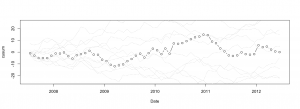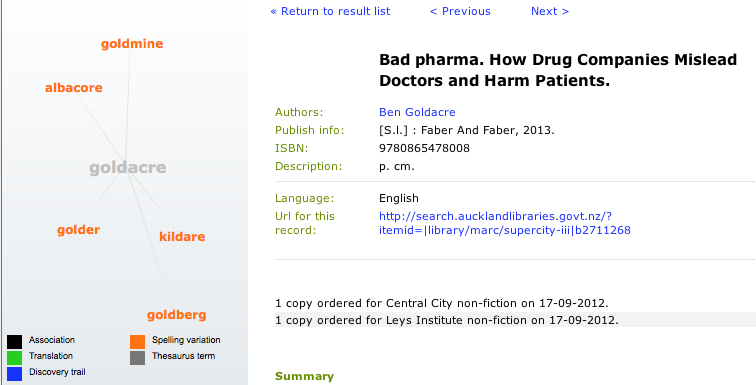Luis Apiolaza has an interesting post on suicide statistics in Canterbury, where he examines the Coroner’s comments that suicide rates decreased after the quake.
He compares the actual counts of suicides since 2007 to a purely random sequence of counts with the same mean (a Poisson process), and doesn’t see much difference: one of the panels below shows the real data, and the other four show data with no pattern.

Another way to look at the same thing is with cumulative sums, used in industrial process control: the dots are cumulative sums of actual minus average suicides, and the dashed lines in the background are ten simulated versions of the same thing, with no true pattern. Again, the real data doesn’t stand out as different.

These analyses answer the question “Is there evidence of changes in suicide rate in Canterbury some time in the last five years?”, saying “Not really”. However, if we know when the February earthquake was, and we know that lower suicide rates (and also crime rates) are often seen after natural disasters, we can ask if the Canterbury data are consistent with that expectation. They are, as the Coroner observed, but if you didn’t already have that expectation, the data wouldn’t provide much evidence for it.
The data don’t speak for themselves: you have to ask them questions, and the choice of question matters.



